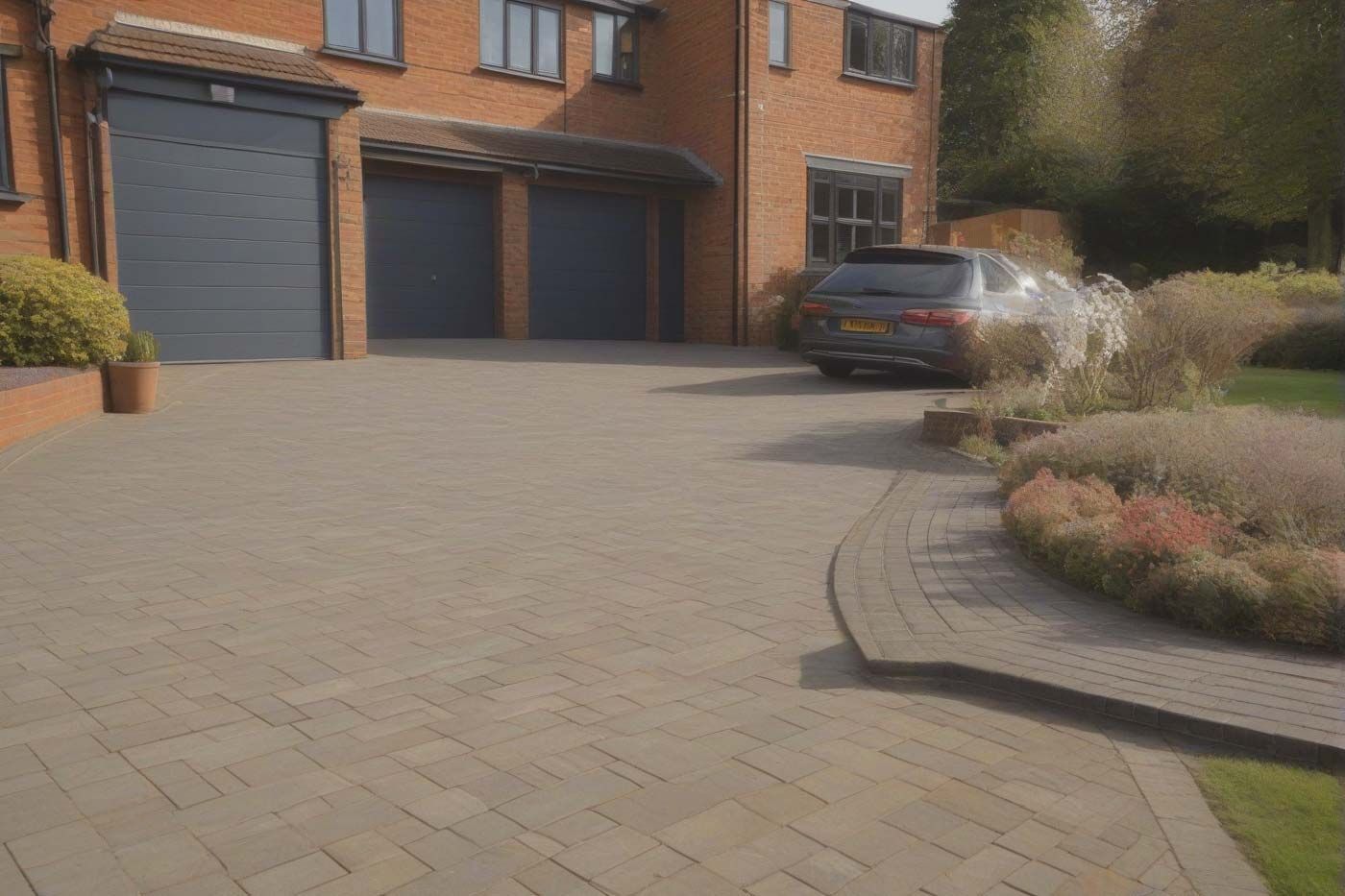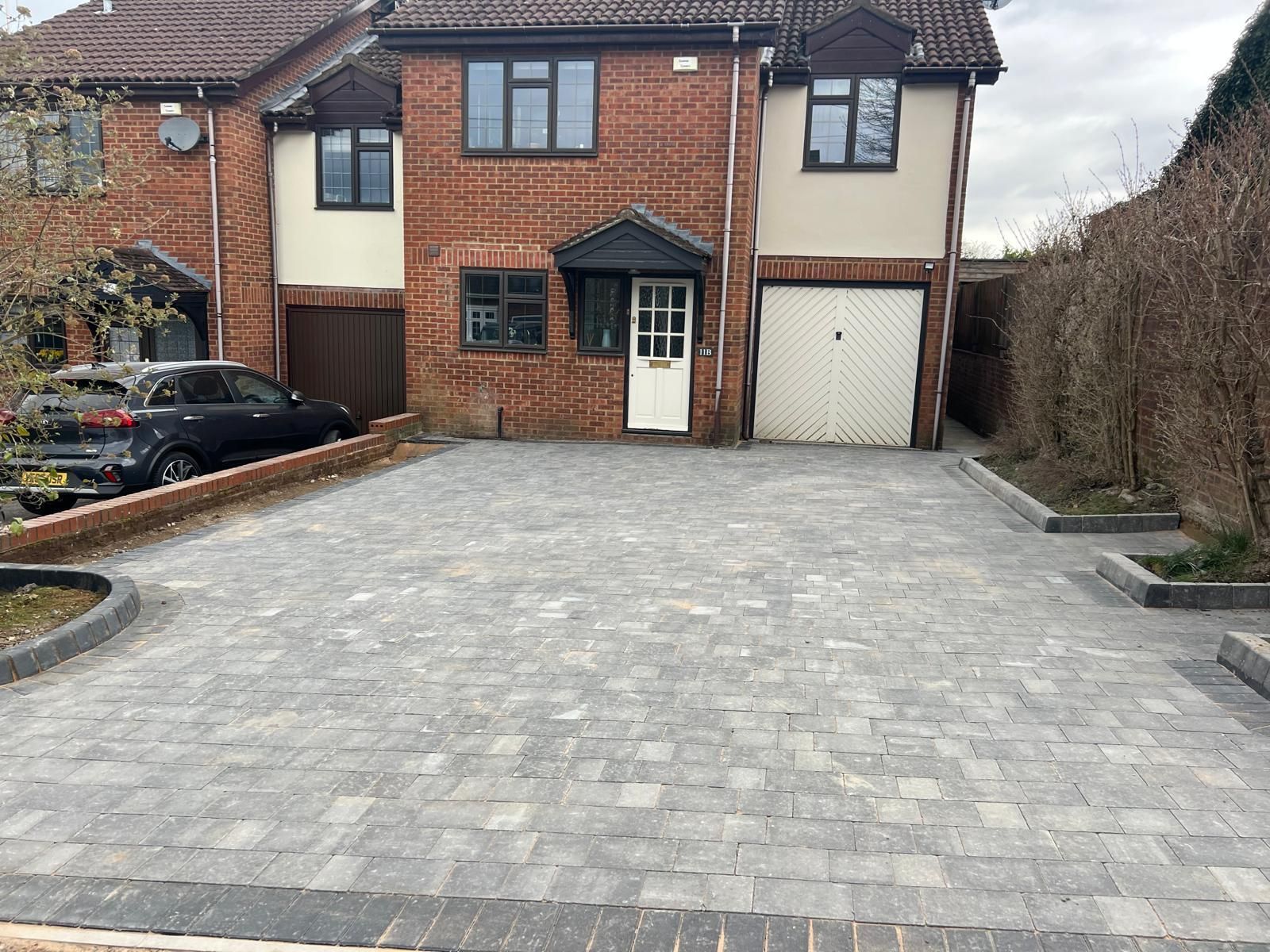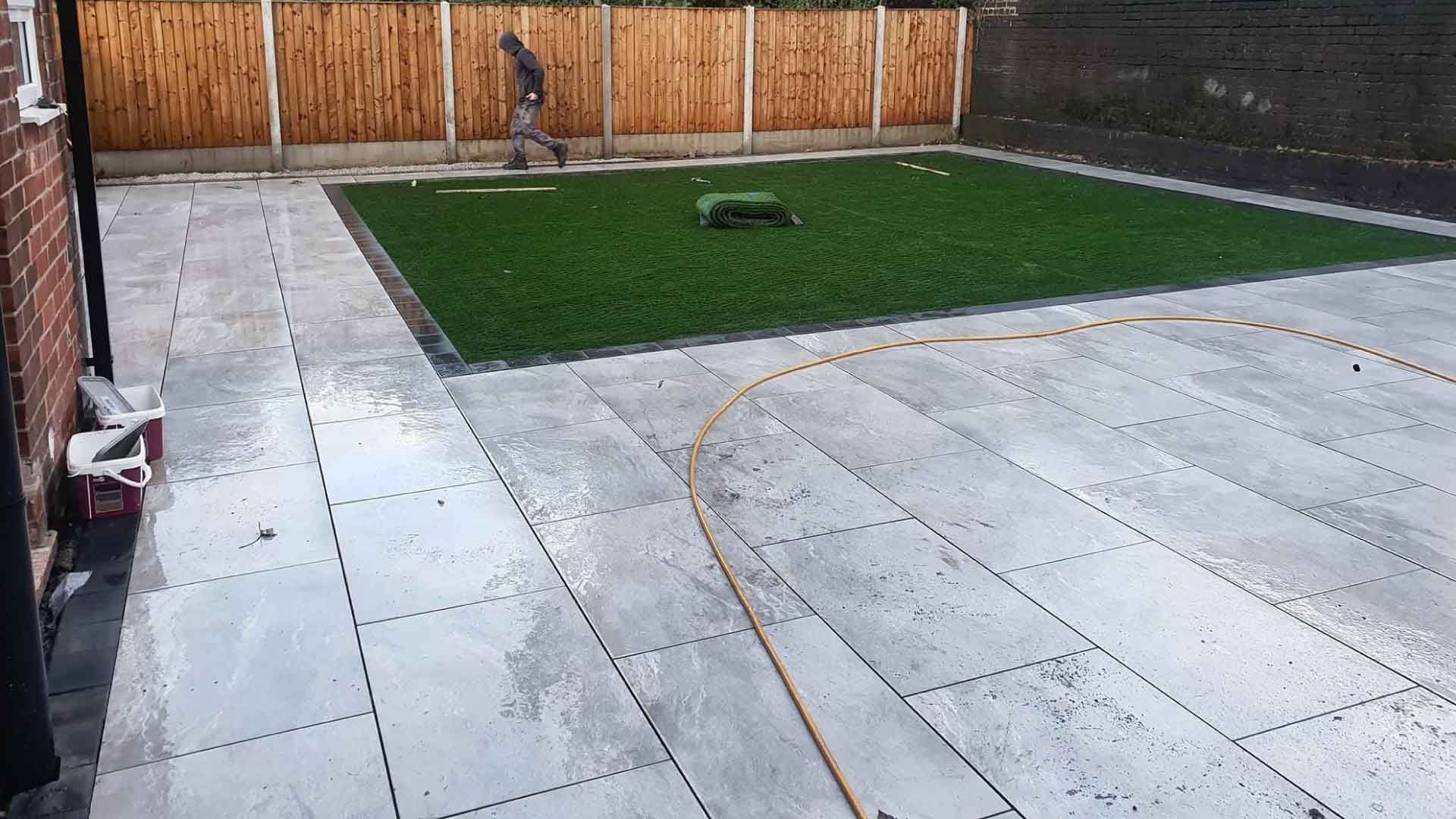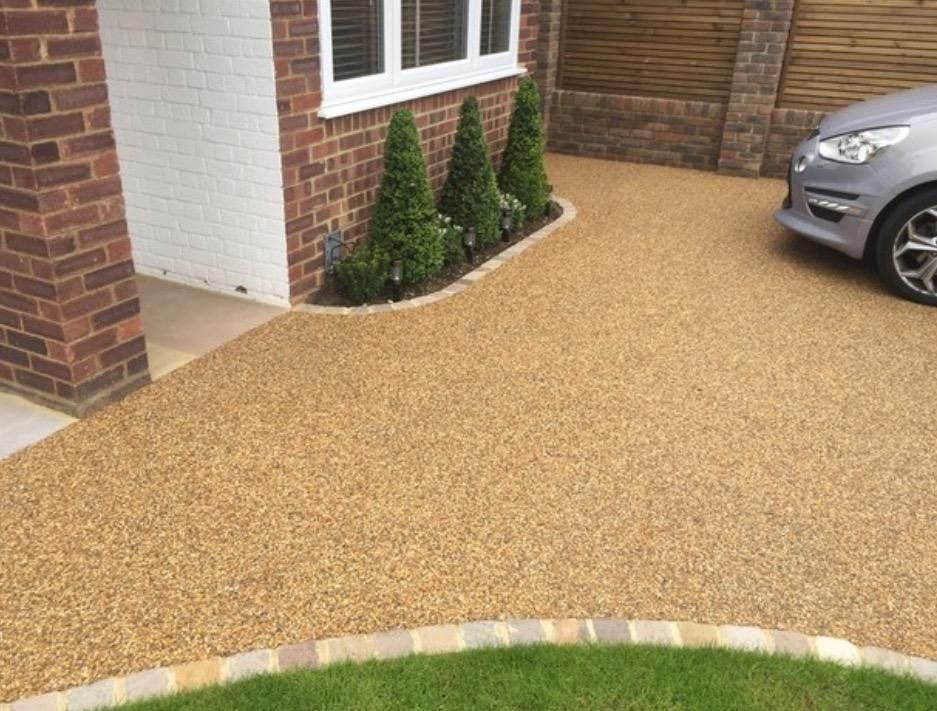Dropped Kerbs Explained: Costs, Planning Permission & Installation Guide
What Is a Dropped Kerb?
A dropped kerb is a section of pavement where the kerb has been lowered to allow vehicles to cross over onto a driveway or private property easily. Typically found outside residential or business premises, dropped kerbs are essential when you want to create off-street parking, such as using your driveway. Not only does a dropped kerb provide a convenient entry point for vehicles, but it’s also a legal requirement if you’re driving across a public footpath to access your property.
Properly installing a dropped kerb ensures the safety of both pedestrians and drivers while maintaining compliance with current regulations.

Why Do You Need a Dropped Kerb?
There are several reasons why homeowners and business owners choose to install a dropped kerb:
- Accessing a Driveway: If you park your vehicle off the street, a dropped kerb allows you to drive over the pavement without damaging it or your car.
- Legal Compliance: Driving over a pavement without a dropped kerb is illegal in the UK and may result in fines or damage to pedestrian walkways.
- Improved Property Value: Off-street parking is an attractive feature for buyers. A professionally installed dropped kerb can increase your property’s curb appeal and overall value.
- Convenience: No more navigating tight parking spaces on crowded residential streets.
For many residents in busy urban areas, such as those in the UK’s suburbs and cities, having a dropped kerb is a practical solution to parking woes.
Do You Need Planning Permission for a Dropped Kerb?
Yes, in most cases, you do need planning permission.
When you want to install a dropped kerb, you’re making modifications to a public highway (pavement or verge), which is governed by local councils. As such, planning permission is typically required before any work can begin.
Here’s what you need to know about planning permission:
1. Council-Specific Rules:
Different local authorities may have slightly varied requirements, so it’s best to check with your local council directly.
2. Approval Process: You’ll need to submit an application, which includes a site plan and details about the proposed works. There may also be a fee involved.
3. Site Considerations: The council will assess your application based on several factors, such as:
- Whether there is enough space to accommodate a vehicle safely.
- Potential risks to pedestrians and other road users.
- Existing road conditions and traffic patterns.
If your property is on a classified road or near a bus stop, junction, or similar infrastructure, obtaining planning permission can be more complex.
Hiring a contractor, such as P&M Kelly Block Paving, who understands the local requirements can help smoothen the process.
"A dropped kerb is more than just a convenience; it's a legal necessity for accessing your driveway and a key factor in ensuring pedestrian safety. Navigating the planning permission process can be tricky, so it's crucial to get it right."
Costs Involved in Installing a Dropped Kerb
The cost of installing a dropped kerb can vary depending on a range of factors, including local council fees, the size of the kerb, and the complexity of the project. Let’s break it down:
1. Application Fees
Most local councils charge a planning application fee for assessing your dropped kerb request. This can range from £50 to £200, depending on your location.
2. Construction Costs
The actual work to lower the kerb will come with its own costs, which typically range between £800 and £1,500. The total cost depends on:
- The number of kerbstones that need to be lowered.
- The type of materials used for the pavement and driveway.
- Any additional features, such as drainage solutions.
3. Inspection or Permit Charges
Many councils require an inspection fee to ensure the work is up to standard. Some also charge for permits, particularly if the work involves temporary road closures or other disruptions.
4. Additional Expenses
- If additional pavement repair or drainage work is needed, it may increase the cost.
- In some cases, moving street furniture (e.g., lamp posts or bollards) or utility connections could be necessary, which adds to the expense.
At P&M Kelly Block Paving, we provide clear, transparent quotes to help you budget effectively for your dropped kerb installation.
The Typical Costs Involved In Installing A Dropped Kerb
| Cost Item | Typical Range | Notes |
|---|---|---|
| Planning Application Fee | £50 - £200 | Varies by Local Council |
| Construction Costs | £800 - £1,500 | Depends on kerb size, materials, and complexity |
| Inspection/Permit Fees | Variable | Charged by some councils |
| Additional Expenses | Variable | For extra work (pavement repair, drainage) or moving utilities |
The Dropped Kerb Installation Process
Installing a dropped kerb is a structured process that includes several key stages:
Step 1: Assessment and Design
A surveyor evaluates the site to determine the feasibility of the project and offers recommendations on the design that complies with council regulations.
Step 2: Applying for Permission
Submit your planning application to the local council. This often includes providing site photos, maps, and technical specifications.
Step 3: Council Approval
Following submission, the council will inspect the proposed site before granting permission.
Step 4: Work Begins
Once approval is obtained, the contractors begin the installation by:
- Marking out the area.
- Excavating the pavement and lowering the kerb stones.
- Reconstructing the pavement for a safe, smooth transition.
- Ensuring proper drainage and water runoff.
Step 5: Final Inspection
The council may conduct a post-installation inspection to confirm that all work has been undertaken to acceptable standards.
By working with experienced professionals like P&M Kelly Block Paving, you can ensure a hassle-free process and a high-quality finish.
Choosing the Right Contractor for the Job
Not all contractors have the expertise needed for dropped kerb installations. Since the work involves public highways, it’s critical to hire a contractor who is:
- Council-Approved: Many councils maintain a list of approved contractors experienced in dropped kerb installations.
- Fully Qualified and Insured: Ensure the contractor holds the necessary qualifications and insurance for working on public highways.
- Experienced in Local Projects: Contractors familiar with local requirements can make the planning and approval process much smoother.
- Reputable and Reliable: Check for positive reviews, testimonials, and examples of previous work.
At P&M Kelly Block Paving, we pride ourselves on being a Trusted Trader with years of experience in dropped kerb installations. Our team is fully insured and council-approved, making us the ideal choice for your project.
How P&M Kelly Block Paving Can Help
At P&M Kelly Block Paving, we offer a comprehensive service for dropped kerb installations, from initial assessment to final inspection. Here’s why you should consider us for your project:
- Expertise: Our team brings years of expertise in block paving and dropped kerb installations.
- Custom Solutions: We design kerbs tailored to your property’s unique needs, ensuring functionality and aesthetic appeal.
- End-to-End Service: From handling your local council application to completing the install, we manage every stage of the process.
- Exceptional Results: Our commitment to quality ensures a durable dropped kerb that complies with all regulations.
Contact us today to arrange a consultation or request a free, no-obligation quote.
FAQs About Dropped Kerbs
Q: How long does the dropped kerb installation process take?
The entire process, including planning permission, may take 4–10 weeks. The physical installation usually takes 2–3 days.
Q: Can I install a dropped kerb myself?
No. Installing a dropped kerb involves modifying public highways, which requires licensed contractors and council approval.
Q: Are dropped kerbs suitable for all properties?
Not necessarily. The local council will assess factors like driveway dimensions, proximity to junctions, and pedestrian safety before granting permission.
Q: Can I widen an existing dropped kerb?
Yes. However, you may still need to apply for permission to extend an existing dropped kerb.
Conclusion
Installing a dropped kerb may seem like a daunting task, but with the right preparation and the help of experienced professionals, the process is straightforward. A dropped kerb not only enhances the functionality and safety of accessing your property but also adds value and convenience.
At P&M Kelly Block Paving, we specialise in delivering high-quality dropped kerb solutions tailored to meet your needs. Whether you’re navigating planning permission or ready to begin installation, we’re here to help every step of the way.
Contact us today to learn more or get a free quote!










